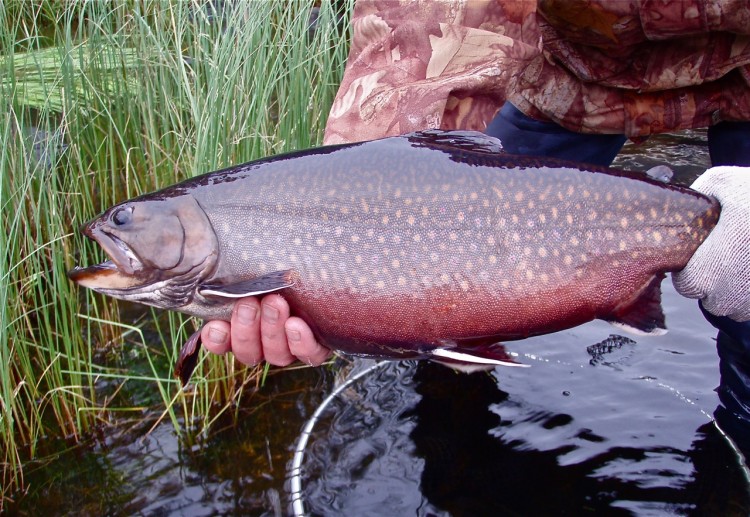While over the years I have had great fishing at Minipi throughout the season, from ice-out in June until shortly before the snows began to fly in September, the “green drake” hatch, a July phenomenon, has provided some of my most wonderful memories. First, understand that the green drake (Ephemera guttulata) familiar to most anglers in the eastern and Midwestern U.S. is not the same insect. The Labradorean version belongs to a different, though similar genus, called Hexagenia—-not that the brook trout really care! They are closely related to the huge and hugely popular “Michigan mayfly” and are highly prized by the trout. The nymphs burrow in the silt of slow moving sections of rivers, and the adults are actually more yellow than green. “Hex” nymphs are tannish and brown, with grey gills, and quite elongated, so use imitations tied on long shank size eight or ten hooks. Large dry flies like Stimulators, Blond Wulffs, Humpys, and others work best during the hatch.
Unlike fish in a typical stream scenario, which allow the current to bring the insects to their feeding lies, the Minipi brook trout cruise and feed in a roughly circular or elliptical pattern, always on the move. If you see a rise, it’s critical to note the direction the fish was moving. Don’t cast to the rise; the fish will already have moved on. Lead the fish by casting your offering about six or eight feet ahead of the last take, and wait until the fish gets to it. I can’t help with your rapid heartbeat and pounding pulse as you wait for a seven-pounder to grab your fly. I have the same problem.

A brightly colored 7.5 pound trout taken during Green Drake time.

